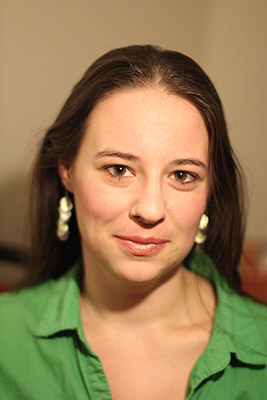The First Day of Class


The first day of anything sets the tone for the rest of what is to come: the first day of softball practice, the first day of band rehearsal, and the first day at a new job are just a few examples that come to mind.
A 2007 study found that students who experienced a positive first day of class exhibited better attitudes, positive expectations, and higher motivation over the duration of the course.
To the surprise of the investigators, students also earned higher grades than the students with negative first day experiences, though it should be noted that the sample size for this study was very small, and the investigators recommend further research.5
So, for first-year teaching faculty and instructors out there, what do you need to know to prepare you for the first day of class?
Where to Start, What to Cover
Research on the best way to structure the first day of class is sparse. Much of the available literature recommends further study with larger sample sizes; however, there is situational evidence that points to best practices for a successful first day of class.
I have pulled together some useful information, some direction, and tips to help you organize your first day of class so you can make a positive impact on your students and set the tone for a great semester to come.
Of the studies reviewed, there were several recurring components that were found to be a part of having a successful first day of class.
As past students, we have all experienced the variety of ways the first day of class can go. Going through the syllabus and course expectations, getting to know the students, icebreaker games, diving into the curriculum, or, some combination of these approaches.
When students are asked what they want, the vast majority report wanting to go through the syllabus and gain information on course expectations and other more administrative tasks.1 On the first day, your students will also be gathering information about you as an instructor: Are you approachable, how do you view them as students, what is your teaching style, and what will the classroom atmosphere be like?1, 4
Of the studies reviewed, there were several recurring components that were found to be a part of having a successful first day of class. These components are:2, 4
- Establishing a warm interpersonal relationship with students.
- Introducing the instructor.
- Communicating clearly about the course expectations.
- Actively involving students from the start.
- Establishing the tone or atmosphere of the course.
Students commented on the importance of instructors being organized, clear, and enthusiastic while delivering information, particularly on the first day of class.4 Even though the majority of students do not necessarily want to engage in any course material or activities beyond gathering information about expectations, there have been preliminary studies suggesting better student outcomes in classes that follows the components of a successful first day of class.3, 5

One Way to do It:
A 2008 study examined the use of reciprocal interviewing as a strategy to establish interpersonal relationships with students and set the tone and atmosphere of the course.2 A follow up study utilizing the reciprocal interviewing activity found that the method “can be related to the important outcomes at the end of the term.”3
Reciprocal interviewing is when each party has the chance to interview the other. Here’s how they did it in one classroom:
- Class started with a quick course introduction and a run through of the syllabus.
- The instructor handed out questions to each student to complete individually. Five minutes were given. The questions were:
- What are your goals for the course?
- How can the instructor best help you achieve those goals?
- What reservations do you have about the course?
- What resources can you bring to the course?
- What norms of behavior or ground rules should we set to ensure course success?
- What are pet peeves you have of either professors or classes?
- What are some annoying traits of professors that you’ve had?
- After the five minutes, groups were formed to consolidate the responses of all group members. Ten minutes were given.
- A spokesperson was chosen for each group and they went over their answers to the questions in front of the class. No more than ten minutes were given for these to be shared.
- After the students were interviewed, it was their turn to interview the instructor. The instructor provided them with a paper with suggested questions for them, but also space to write other questions they may have of the instructor. Five minutes were given to complete these individually. Suggested questions were:
- What are your course objectives?
- What is your approach to grading?
- What are your expectations of students?
- What is your role in the course?
- After the five minutes, groups were again formed to consolidate questions. Five minutes were given.
- A spokesperson was again chosen for each group and they shared their questions with the instructor and class. The instructor answered the questions. This portion took roughly ten minutes, up until the last few minutes of class.
Many students found the technique useful, however it should be noted that the bulk of the population was comprised of Caucasian females, so there was limited diversity in the test sample. Many expressed appreciation that they were given the chance to be heard on the first day of class.2

Through this activity instructors were able to not only gather information about their students, but also interact with that information and start building that positive interpersonal relationship. Students were able to find out what additional information they needed about the course, as well as about their instructor. The activity promotes a positive, active learning environment, setting the stage for future active learning activities, and contributing to the overall tone of learning and exploration as a team.
Will this work in all classrooms? Probably not, however the follow-up study gathered anecdotal evidence that this method had been used effectively with a classroom of 70-80 students, with modifications, of course.3
This is just one of many different ways the first day could look, but it is a great example of meeting all of the recommended components for a successful first day, and could be used across several different disciplines.
Suggestions for a Good First Day
Below are some tips and things to remember that can lead to a successful first day.4
- Go over the syllabus, but do not expect them to just read it and understand.
- Establish a learning community after administrative tasks are done on the first day.
- Provide clear information on your accessibility to students.
- Share your teaching style, rules, and enthusiasm.
- Be clear about grading.
- Do not single out late or confused students.
- Provide an open environment.
- Take into account the level of students you have; freshmen may need more of an icebreaker activity; whereas, seniors would be equipped to engage in course material on the first day.
These are some that I have learned through my time as an instructor:
- Watch the clock and know when class starts and ends.
- Find your classroom ahead of time (a day ahead of time at least, not a few hours).
- Know what technology you will have available, how to run it, and check to see if you need any adapters.
- Accept that you are not going to get student buy-in from all students on the first day. Your expectations should be clear. Be consistent and follow through. It’s a marathon, not a race, and how you start is important.
- Be authentic to who you are as an educator. What you present should fit your teaching style.
You can find more thoughts about the first day of class on this Transformed Teacher blog post.
Time to Get to Work

There is no tried and true, right way to do it. You need to take into account the subject you teach, the length of your class period, the feasibility of any activities you want to try, and sometimes even the layout of your classroom. [1] Figuring out how you want to have the most positive impact possible on your first day provides a great opportunity to get together with your peers and discuss ways they have started class on the first day, as well as brainstorm unique and engaging ways to draw the students in while simultaneously building rapport and communicating vital information.
Have you developed a way of successfully building a learning community environment on the first day in your classroom? Please share it in the comments section!
More Resources
- The Transformed Teacher Changing Educational Pain To Pleasure
- The Transformed Teacher Top 10 List for Day 1
- https://www.chronicle.com/article/The-First-Day/136221
- https://iastate.app.box.com/v/10-ideas-and-who-is-in-class
- https://www.lcc.edu/cte/resources/start-and-end.html
References
- Anderson, D. M., McGuire, F. A., Cory, L. (2011). The first day: It happens only once. Teaching Higher Education 16, 293-303.
- Case, K. A., Bartsch, R. A., McEnery, L., Hall, S. P., Hermann, A. D., & Foster, D. A. (2008). Establishing a comfortable classroom from day one: Student perceptions of the reciprocal interview. College Teaching, 56, 210-214
- Foster, D. A., & Hermann, A. D. (2011). Linking the first week of class to end-of-term satisfaction: Using a reciprocal interview activity to create an active and comfortable classroom. College Teaching, 59, 111-116. doi: 10.1080/87567555.2011.572098
- Iannarelli, B. A., Bardsley, M. E., & Foote, C. J. (2010). Here’s your syllabus, see you next week: A review of the first day practices of outstanding professors. Journal of Effective Teaching, 10, 29-41.
- Wilson, J. H., & Wilson, S. B. (2007). The first day of class affects student motivation: An experimental study. Teaching of Psychology, 34, 226-229. doi: 10.1080/00986280701700151
About the author:

Amy Tichy is pursuing her M.Ed. in clinical mental health counseling at NDSU. She graduated with a Master of Arts in theatre with a concentration in drama therapy from Kansas State University (2014), where she was a Graduate Teaching Assistant, lecturing 6 credits of Public Speaking per semester, and with a Bachelor of Science in history education and theatre education from Dickinson State University (2010). Amy is a licensed teacher and a Registered Drama Therapist. She works in the Office of Teaching and Learning as a Graduate Assistant.